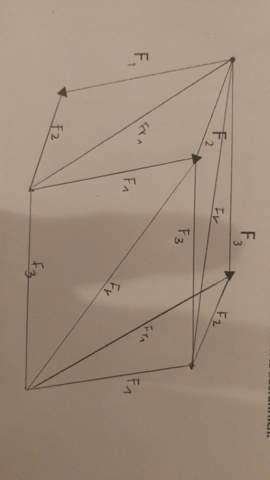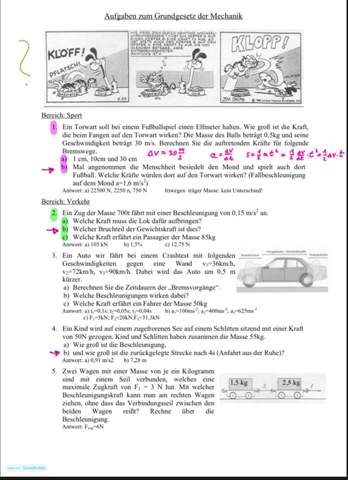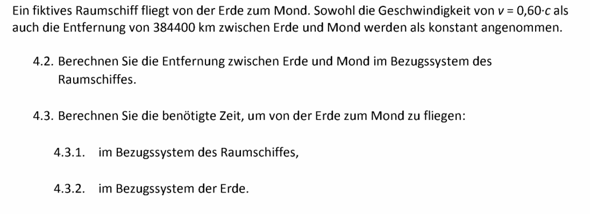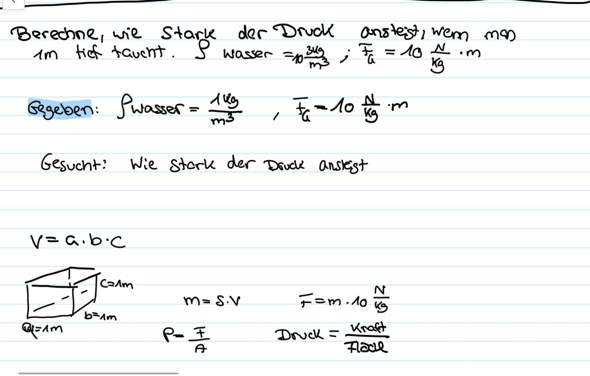Die Zeit läuft davon...
Aufgabe:
"In einem Glas befinden sich 0.5 Liter Wasser bei einer Temperatur von T2 = 20◦C. a) Wieviel Wärme muss dem Wasser entzogen werden, um es auf die Temperatur T1 = 5◦C abzukühlen?
Hinweis für flüßiges Wasser beträgt die spezifische Wärmekapazität c_Wasser = 4.2 Jg−1K−1 . Die Dichte beträgt ρWasser = 1.0 cm−3 .
(b) In das Wasserglas aus (a) bei der Temperatur T2 = 20◦C wird ein Eiswurfel der ¨ Temperatur T0 = −18◦C gegeben. Wie groß muss die Masse des Eiswurfels ¨ mEis (gemessen in g) sein, damit nach dem vollständigen Schmelzen die Temperatur des Wassers gerade T1 = 5◦C beträgt? (Gib den berechneten Wert gerundet auf drei signifikante Stellen an.)
Hinweis: Spezifische Wärmekapazität von Eis: cEis = 2.0 Jg−1K−1 . Schmelzwärme: ∆QS = 333.5 Jg−1 . Schmelztemperatur: TS = 0◦C."
Jensek81'scher Ansatz:
a) 0, 5l = 500 cm³ = 0, 5 dm³ = 0,5 * 10^-3 m
m*p* V = 1,0 g /cm³ * 0,5 * 10^-3 m³ = 500 g
Temperaturveränderung ∆ T = T2 - T1 = 20 Grad -- 5 Grad = 15 Grad
∆Q = cw * mw * ∆T = 5,2 J / g C * 500 g * 15 C = 31500 J
b) Zunächst wird das EIs von -18 Grad au f0 Graad erwämt. Dazu wird Wärme Q1 benötigt.
Q1 = m * c * ∆T = 2,0 J/kgK * 18 Grad = 36 kJ/kg
Dann wird Eis geschmolzen. Dazu Wärme Q2
Q2 = m * q = m * 335, Jg^-1
Um das geschmolzene Wasser auf 5 Grad zu erwärmen ist Q3 erforderlich.
Q3 = m * c * ∆T = m * 4,2 Jg^-1/K^^1 * 5 K = m * 21 kJ/Kg
Q = Q1 + Q2 + Q3
m * 36 kJ/kg + m * 333,5 kJ/Kg + m * 21 kJ/kg = 31500 J
m (36 kJ/Kg + 333,35 kj/kg + 21kJ/Kg) = 31500 J
m + 390,5 kJ/kg = 31500 J
=> m = 31500 J/ 390,5 kJ/g = 80,66 g
Der Eiswrüfel hat 80,66 g
Kann das sein? oder ist das Kakolores?
Mit freundlichen Grüßen.
Ach, jetzt hätt ich schon fast ausversehen meinen Klarnamen geschrieben.
Seht ihr, soweit kommt's noch. Hahaha
Also, nochmal:
Mit freundlichen Grüßen,
Jensek81









